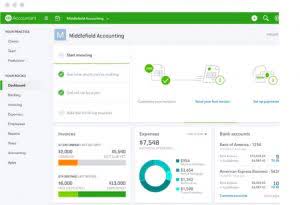
This section is located near the bottom of a balance sheet, after the presentation of asset and liability line items. A change in the corporate charter is needed to increase the number of shares authorized for issuance. This typically requires the approval of the shareholders, which may be obtained from a mail-in ballot or during a shareholders’ meeting.
- Those who own shares in the capital stock of the corporation own a percentage of the company.
- Unlike outstanding shares issued to shareholders, treasury shares or treasury stock do not grant voting rights or right to dividends.
- The cap table below sets out the category of security holders in rows and in the columns lists the securities they own (or have reserved).
- There are two ways to earn money by owning shares of stock is through dividends and capital appreciation.
- Likewise, if a major shareholder goes bankrupt, they cannot sell the company’s assets to pay their creditors.
- When companies do this, it is usually so that they can raise more capital.
Bondholders are creditors to the corporation and are entitled to interest as well as repayment of the principal invested. Creditors are given legal priority over other stakeholders in the event of a bankruptcy and will be made whole first if a company is forced to sell assets. If you own a majority of shares, your voting power increases so that you can indirectly control the direction of a company by appointing its board of directors. Assets are things that could increase the value of a company over time, while liabilities are debts that must be paid or goods and services obligations that must be fulfilled.
Why Capital Stock Matters
Common shareholders have the most potential for profit, but they are also last in line when things go bad. For purposes of the NIIT, investment income generally includes taxable interest (but not tax-exempt interest), dividends, and capital gains. Some other investment income, like rental and royalty income, may also apply.
- He is a CFA charterholder as well as holding FINRA Series 7, 55 & 63 licenses.
- However, they can also be exchanged for assets which, in turn, can help to facilitate the company’s growth.
- Capital stock represents the total number of shares a company is authorized to issue (authorized shares) whereas outstanding shares represent the actual number of shares issued to shareholders.
- That’s a crucial distinction for taxes, making asset location an important consideration for your finances.
- Preferred stock is listed first in the shareholders’ equity section of the balance sheet, because its owners receive dividends before the owners of common stock, and have preference during liquidation.
- It is important to note that par value is a set dollar amount assigned to each common share.
- The basics of capital stock accounting provide a solid foundation for understanding the complexities of accounting for stock.
Instead, when a company offers stock, it confers ownership of a portion of the business to the buyer. In issuing its common stock, a company is effectively selling a piece of itself. The stock purchasers give up cash and in exchange receive a small ownership stake in the business. Preferred stock is a type of capital stock that gives shareholders preferential treatment in terms of dividends and asset distribution. They don’t have voting rights but have a higher asset claim than common shareholders.
Capital Stock: Definition, Key Insights & FAQs
Shares of Newmont stock traded up $1.27 during midday trading on Wednesday, reaching $35.27. The company had a trading volume of 10,660,285 shares, compared to its average volume of 13,369,417. The stock has a fifty day moving average price of $33.51 and a 200 day moving average price of $36.95. The company has a debt-to-equity ratio of 0.25, a current ratio of 1.25 and a quick ratio of 0.98. The firm has a market cap of $40.66 billion, a PE ratio of -14.81, a P/E/G ratio of 2.90 and a beta of 0.49. Newmont Co. has a fifty-two week low of $29.42 and a fifty-two week high of $52.76.

For example, if a company has 1 million shares of preferred stock at $25 par value per share, it reports a par value of $25 million. Several other hedge funds have also recently the basic form of capital stock is added to or reduced their stakes in the company. Freedom Wealth Alliance LLC purchased a new position in Stryker in the fourth quarter valued at approximately $26,000.
Subscribe to be notified of new content on MarketSplash.
It is filed with the state government of whatever state the company incorporates in. It details things like a company’s location, whether it will be a profit or nonprofit, its board composition, and its ownership structure. This also is where a company will state the number of authorized stock they intend to use. When a company sells shares in an initial public offering, the IPO price is normally well above the par value. In addition, any secondary offerings or share buybacks will also affect the value of the capital stock. Some taxpayers believe that any profit on the sale of a home is taxable—but that’s not true.

One of the easiest ways to raise funding is through issuing common stock, which comes with both advantages and disadvantages when compared to taking out a traditional loan. You can also see that Alphabet, Inc. had 100,000 shares of preferred stock authorized but not issued. Many states require that stock have a designated par value (or in some cases stated value). Thus, par value is said to represent the “legal capital” of the firm.
